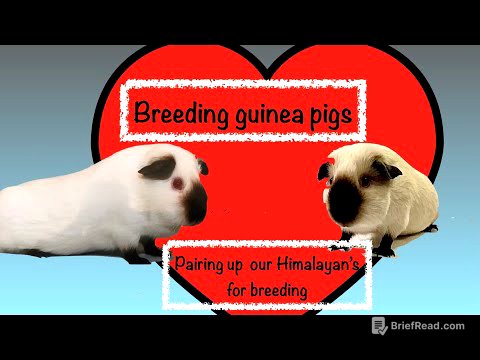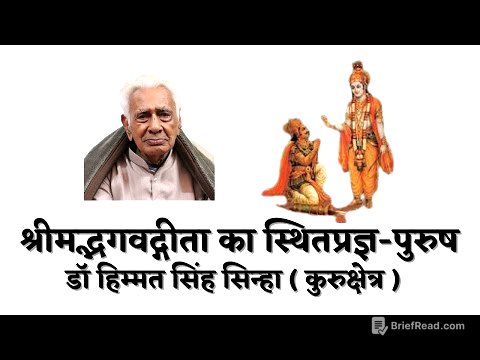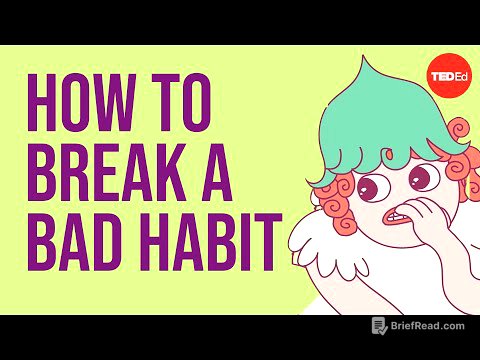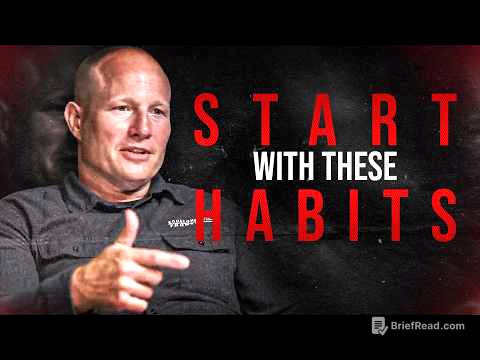TLDR;
This video explores the journey back to one's essential nature through the dissolution of conditioning. It outlines seven stages of this return to stillness, characterized by shifts in how the body holds stories, how the mind interacts with experience, and how consciousness relates to daily life. The speaker emphasizes that this is not a linear progression or a checklist of spiritual achievements, but rather an organic process of releasing what is not real.
- The journey involves addressing the physical, energetic, and consciousness layers simultaneously.
- Each stage has its own potential for spiritual seduction, where the mind may prematurely claim advanced realization.
- The ultimate goal is to return to a state of naturalness, simplicity, and wholeness, where stillness is the foundational quality of consciousness.
Introduction [0:01]
The speaker introduces the concept of returning to one's essential nature, which lies beneath all seeking. This return involves a gradual dissolution of conditioning that obscures this essential nature. The journey is not about achieving enlightenment or becoming a better version of oneself, but about returning to what one has always been. This process unfolds naturally through different phases, each marked by shifts in how the body, mind, and consciousness relate to experience. These observations are not rules to follow, but rather understandings to help navigate the path with discernment.
Stage 1: Held in Reactivity [6:09]
In the first stage, the body carries tension like armor, constantly alert and reactive. Life feels like a series of challenges to be survived. Consciousness operates through reactive patterns woven from accumulated life experiences. The nervous system is perpetually vigilant, interpreting experiences through the lens of old wounds. Emotional responses are automatic and intense, triggered by subtle cues that activate old patterns. The mind engages in constant commentary, comparing present moments to past events and projecting future scenarios based on old stories. Sleep offers little sanctuary, with dreams replaying conflicts and anxieties. Relationships feel difficult and unpredictable, triggering reactions unrelated to the present situation. Relief is sought through numbing and distraction, but these provide only temporary respite.
Stage 2: Moments of Relief [10:55]
In this stage, the body begins to soften, and glimpses of spaciousness emerge. Healing touches surface patterns, providing a taste of consciousness without constant interference. These moments occur unexpectedly, with the body releasing tension, the mind becoming quiet, and emotional reactivity subsiding. Colors appear more vivid, sounds become clearer, and ordinary activities feel fresh. However, these moments are temporary, and familiar triggers can reassert old patterns. Relaxation and spaciousness require favorable conditions and the absence of strong activations. The contrast between these glimpses and the return to reactivity can be painful. Many mistake these initial improvements for the completion of their journey, but deeper patterns remain untouched.
Stage 3: Deeper Letting Go [15:20]
As healing progresses, the body releases tensions held for years, often in waves of emotional expression or physical discharge. The breath deepens, accessing constricted regions of the body. Chronic pain patterns shift or disappear as their sources dissolve. Sleep becomes more restorative, and mental spaciousness becomes more consistent. The compulsive quality of thinking subsides, replaced by purposeful mental activity. Emotional responses become more appropriate to actual circumstances, less colored by historical reactivity. Emotions are experienced as natural responses that arise and pass without lasting disturbance. The mind may create the illusion of having reached enlightenment, but intense triggers can still activate reactive states. Relationships feel more natural, but activation may still occur in charged interpersonal situations.
Stage 4: Hidden Layers of Dissolving [20:36]
The connection between body, mind, and field deepens, and what once stuck now moves through more freely. Stability emerges that external pressure cannot shake. Deeper, more fundamental conditioning surfaces to be addressed, often patterns from early life or significant events. A qualitative shift occurs in the relationship to all experience, with seamless integration between physical, mental, emotional, and energetic layers. External pressures have minimal impact, and challenging situations can be navigated with stability and clarity. This is not due to coping strategies, but because the patterns that would have created reactivity no longer exist. The mind may create the deception of spiritual accomplishment, feeling enlightened or superior. However, if pride or comparison is present, true stillness has not yet been reached.
Stage 5: Natural Flow [26:25]
In this stage, the body and mind no longer hold what passes through them, and the system adjusts naturally without conscious effort. Experiences arise and pass without creating lasting impressions or accumulating as new patterns. The body remains relaxed and responsive, and the mind operates with clear efficiency. New reactive patterns are no longer accumulated in response to challenging experiences. Difficult situations create appropriate responses in the moment, but do not leave energetic residues. This represents a fundamental shift from accumulating impressions to allowing experiences to pass through awareness. The mind may create the subtle deception of ultimate spiritual achievement, feeling transcendent and enlightened. However, if awareness of the flow or a sense of specialness is present, the mind is creating a sophisticated spiritual identity.
Stage 6: Stillness as a Foundation [33:04]
Stillness becomes the foundational quality of consciousness, rather than something that emerges occasionally. This stillness is the unchanging background of awareness within which all activity occurs. Stillness is recognized as one's essential nature, not a state to be achieved. This foundational stillness remains constant regardless of external circumstances. Difficulties arise and dissolve without leaving an energetic residue. The mind may create the final illusion of having reached the ultimate state, feeling permanent enlightenment. However, if awareness of stillness or a sense of achievement is present, the mind is creating a sophisticated spiritual identity. This stage brings a profound ordinariness to experience, with no sense of being special or different.
Stage 7: Complete Return [40:08]
Stillness is the natural state, requiring no effort to maintain, and what arises releases immediately without conscious intervention. The seventh stage represents the complete return to consciousness' original state. Stillness is not something you experience, but something you are. There is no separation between the experiencer and the quality of stillness. Awareness recognizes itself as naturally still, peaceful, and whole. Experiences release immediately and automatically without any conscious intervention. Modern life continues to present its full range of inputs, but none of these create lasting impressions or accumulate as new patterns. It's almost impossible for the mind to claim falsely because there is no mind left to claim anything. There is simply natural function, effortless and unconscious of itself.









